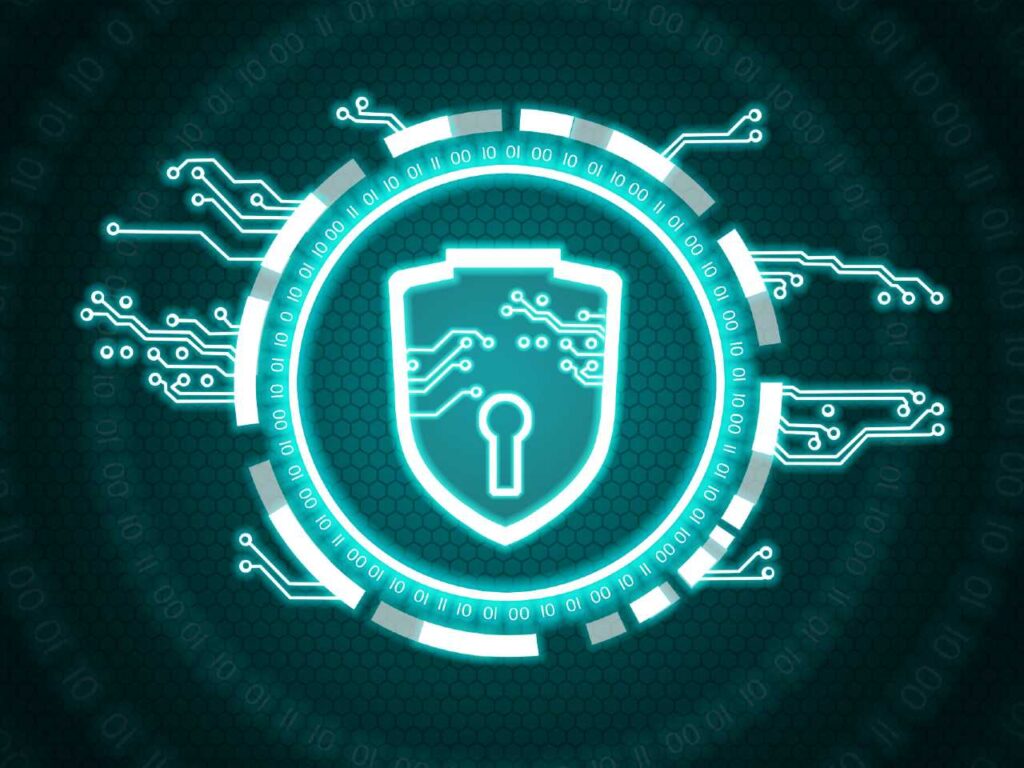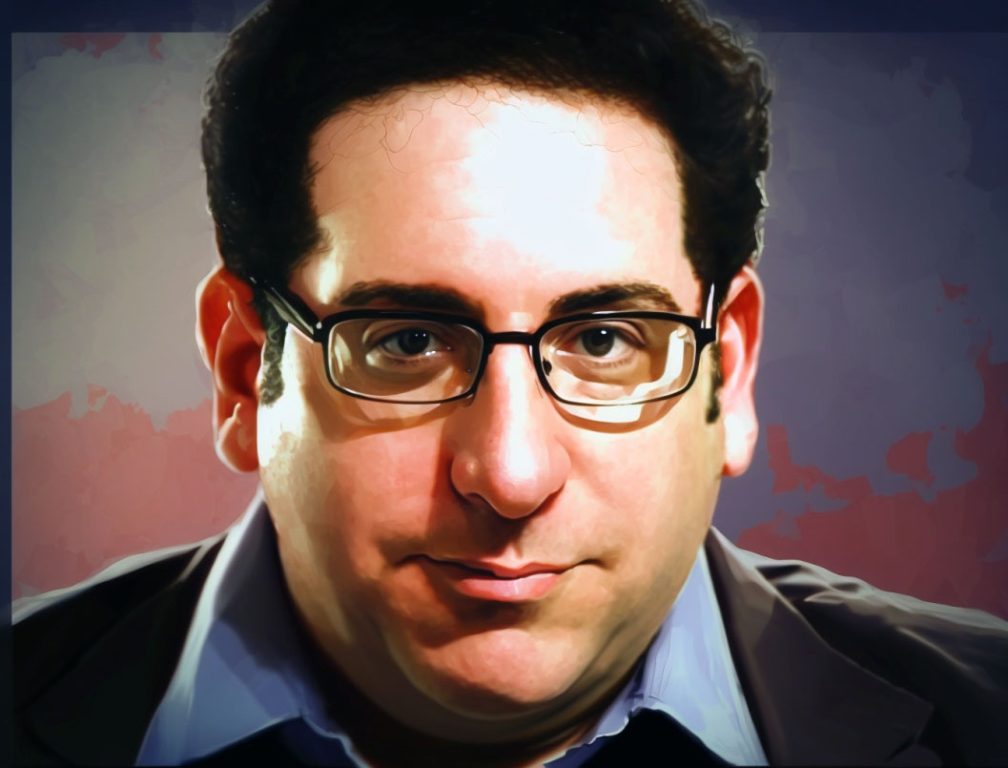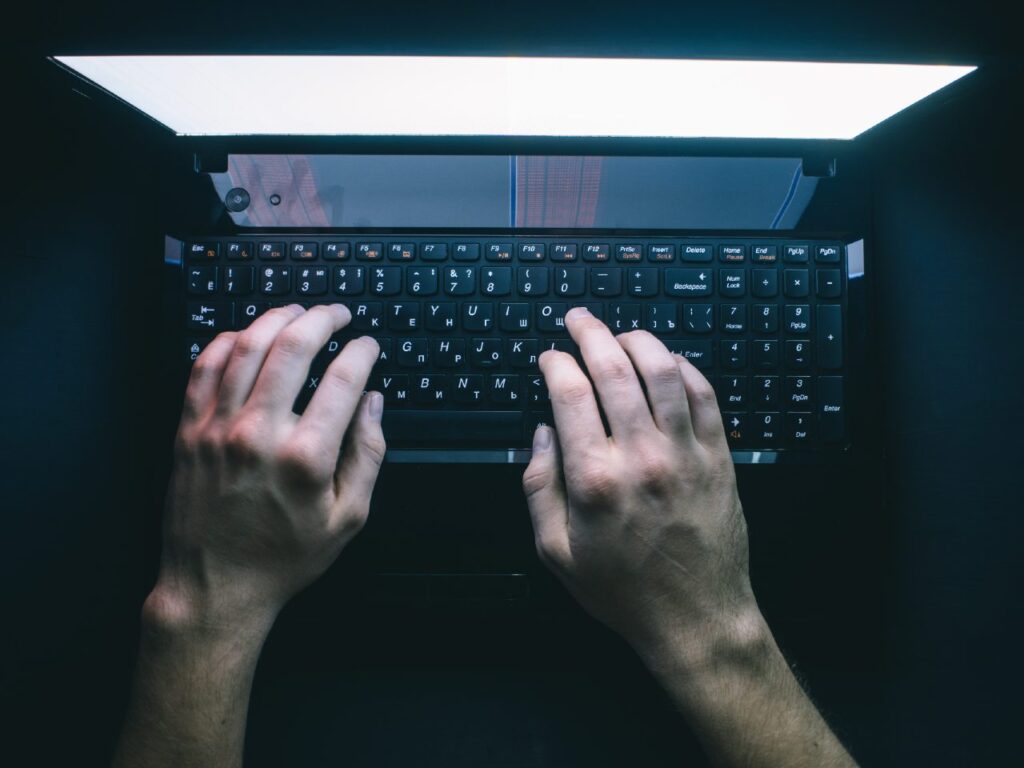Long considered one of the best minds in technology, Mikko Hyppönen has been waging war on malware for over 30 years.
Born in Finland in 1969, he’s since been on the front lines of some of the biggest cybersecurity attacks in history. And when he’s not fighting malware, he’s spreading his vast knowledge of digital security and privacy around the world.

Stay One Step Ahead of Cyber Threats
Hyppönen is a widely recognized and respected figure in the field of cybersecurity. This Finnish expert is the Chief Research Officer for F-Secure, a global security solution provider.
For more than two decades, Hyppönen has been at the forefront of fighting cybercrime, tracking, and making major contributions to understanding global malware outbreaks.
He’s known for his insightful TED Talks and media appearances, where he shares his knowledge about the cybersecurity landscape, internet privacy, and digital rights.
Hyppönen also educates individuals and companies on how to stay safe in the digital world. His work has significantly impacted the tech industry, marking him as a leading authority in his field.
Mikko Hyppönen at a Glance
- Mikko Hyppönen made his name as a cybersecurity researcher for F-Secure.
- In 2003, he and his team took down three of history’s worst viruses in a couple of weeks: Blaster, Welchia, and SoBig.F.
- Hyppönen’s reverse engineering skills and quick thinking made him an in-demand cybercrime consultant for governments and militaries around the world.
- In 2011, Hyppönen analyzed the infamous Stuxnet worm that plagued Iran’s nuclear facilities, concluding that the U.S. government most likely created it.
- That year, he also traveled to Pakistan to interview the creator of Brain, the first PC virus.
- In response to the IoT malware epidemic, Hyppönen created Hyppönen’s Law in 2016, which states that “if it’s smart, it’s vulnerable.”
The Life of Mikko Hyppönen

Mikko Hyppönen entered the world of cybersecurity in 1991 when the internet was just beginning to play a role in the lives of everyday people.
Back then, he was a security researcher at F-Secure (then called Data Fellows), a Finnish company known for developing the world’s first heuristic antivirus software. He developed the company’s research lab, becoming its chief research officer in 1999.
Hyppönen in 2003: The Year of the Virus
Hyppönen rose to international fame in August 2003, when he and his team at F-Secure identified and took down numerous pieces of sophisticated, widespread malware.
That year, Hyppönen says, was the worst in virus history, and August was its worst month.
The Blaster Worm
The chaos began on August 11 with the Blaster worm, which exploited a security hole in Windows XP and could spread automatically to any vulnerable computer with an internet connection. Blaster hijacked its victims to conduct a DDoS attack against the Windows Update website, consuming system resources so heavily that many infected computers began rebooting uncontrollably.
Within hours of Blaster’s release, Hyppönen’s team had identified it. They coordinated with other antivirus companies to warn users about the worm and urged them to download Microsoft’s official security patch.
The Welchia Worm

The following week, a new worm emerged: Welchia, a “helpful worm” designed to spread itself to as many computers as possible, remove the Blaster worm, and install security patches to prevent reinfection.
But Welchia was coded to clog up networks, caused random reboots, and interfered with enterprise IT functions. Many rail systems on the US’s east coast were disrupted, as were Air Canada’s check-in system and countless personal computers.
Hyppönen and his team worked quickly to create a tool to stop the Welchia worm, then put it online as a free download.
But another appeared as soon as that problem was dealt with, and this was the worst of them all.
The SoBig.F Worm
In January of 2003, Hyppönen identified a new email worm. It spread via an infected email attachment, lay in wait for a short time, and then surreptitiously downloaded more malicious files: keyloggers, backdoors, and spam servers.
Hyppönen called it the SoBig worm and quelled its spread quickly by instructing email providers to block all emails from the SoBig email address. But new worm variants continued to pop up throughout the year, each one more sophisticated than the last.
On August 19, after a long week dealing with Blaster and Welchia, one of Hyppönen’s researchers spotted another SoBig variant for the first time.
The team named it SoBig.F, and Hyppönen immediately saw it was leagues apart from its predecessors. It could spread so quickly as to seem unstoppable, and it was scheduled to download an unidentified program in three days’ time.
Within a few hours, Hyppönen had written and released a program to detect and remove SoBig.F from infected computers. But there were still hundreds of thousands of vulnerable users, each sending and receiving thousands of spam emails — and imminently set to experience an even worse infection.
Hyppönen and his team spent the next several days reverse engineering the worm, eventually identifying its 20 originating servers around the world. They then tried to get ISPs and governments to shut those servers down before they could begin serving the malicious download.
Ultimately, 19 of the 20 servers were shut down, and the remaining server was so bogged down with traffic that it never executed its payload. Hyppönen, having saved millions of computers from an unknown fate, was hailed as a cybersecurity hero.
Mikko Hypponen’s Achievements in Cybersecurity
Mikko Hypponen has gained global recognition for his expertise and major contributions to cybersecurity. Over his extensive career in tech, he’s known for tracking and combatting massive cyber threats, improving our understanding of malware outbreaks.
Hypponen is also recognized for his work on analyzing the infamous Stuxnet worm. His effort shed light on this sophisticated piece of malware that notably marked a new era in cybersecurity. In recognition of his work, he has been inducted into the Infosecurity Europe Hall of Fame, cementing his status as a leading figure in the field.
With a constant dedication to cybersecurity, Mikko Hypponen’s achievements have included identifying threats and advocating for digital rights and individual privacy. His unwavering dedication has been central in shaping the landscape of internet security.
The Role of Mikko Hypponen as Chief Research Officer at F-Secure
As the Chief Research Officer at F-Secure, Mikko Hypponen takes the lead in ensuring the company is ahead in spotting and neutralizing cyber threats. His role is crucial in the ever-evolving field of cybersecurity. As part of his duties, he overlooks research operations and dictates strategy regarding responses to online threats.
In this leadership role, Hypponen supports the company in crafting and maintaining cutting-edge security solutions. His innovative thinking and anticipatory approach have been key to keeping F-Secure at the forefront of their industry.
Beyond management, Hypponen’s position also involves public engagement.
Often representing F-Secure in media, he has become the face of the company, translating complex cybersecurity concepts into understandable narratives for the wider public.
His effective communication has fostered trust between the company and its clients.
How Mikko Hypponen Educates Public on Cybersecurity through Talks and Media Appearances
Mikko Hypponen’s influence extends beyond his role at F-Secure due to his dedication to public education on cybersecurity.
He regularly delivers talks and presentations at international conferences. His distinct ability to demystify highly complex topics has made him a sought-after speaker and educator in his field.
His TED Talks, in particular, have gained significant fame and traction. Hypponen breaks down puzzling cyber threats in these talks, making them more comprehensible for the average person. He discusses cybercrime’s true nature and potential impact, reinforcing the need for stronger cybersecurity measures and individual responsibility.
Moreover, his media appearances, whether on print or broadcast platforms, allow him to reach a wider audience.
Through accessible language and clear explanations, he helps the public understand why their digital safety is crucial, boosting awareness and vigilance against cyber threats.
Hyppönen Goes Global

Throughout the 2000s and 2010s, Hyppönen continued his work with F-Secure. But he also saw his newfound fame as an opportunity to educate the populace about cybersecurity.
Hyppönen began traveling around the world, giving presentations to militaries, industry groups, students, and the general public. These ranged from highly technical keynotes at hacker conventions to lectures at Stanford University to TED talks.
Additionally, Hyppönen began offering personal advice to governments facing cybersecurity threats in the US, Europe, and Asia.
In 2007, he was named one of PC World’s 50 Most Important People on the Web. That same year, he joined the advisory board of the International Multilateral Partnership Against Cyber Threats (IMPACT), an UN-backed cybersecurity alliance.
By 2011, Hyppönen wrote columns and articles for the New York Times, CNN, Scientific American, and other world-renowned publications. Several of them addressed the then-unknown origins of Stuxnet, the ultra-sophisticated malware that attacked Iran’s nuclear plants, with Hyppönen correctly surmising that the US government created it.
His profile grew even higher that year when he debuted his documentary, “Brain: Searching for the First PC Virus in Pakistan,” to global acclaim. The film chronicled his trip to Pakistan to meet and interview the creator of Brain, widely considered the world’s first computer virus.
Hyppönen’s Law

As the Internet of Things expanded rapidly in the 2010s, Hyppönen recognized it as a cybersecurity nightmare. Smart lightbulbs, appliances, sensors, accessories, and other gadgets were generally poorly secured, causing a huge spike in IoT malware attacks.
This prompted Hyppönen to issue a cautionary tweet in 2016: “Hyppönen’s Law: Whenever an appliance is described as being ‘smart,’ it’s vulnerable.”
His clear, succinct message — and the seriousness of its implications — again brought Hyppönen’s name to the headlines. The Law took hold so strongly that it formed the basis of Hyppönen’s 2021 book, “If It’s Smart, It’s Vulnerable.”
Mikko Hyppönen: Champion of Cybersecurity
Today, millions of virus researchers around the world owe much of their knowledge to Mikko Hyppönen.
For over 30 years, he’s been on the cutting edge of cybersecurity, acting not to pursue money or fame but to teach others how to protect themselves and their data.
Whether he’s taking down innovative new worms, investigating infamous old ones, or writing the laws that govern cybersecurity as a whole, Hyppönen is a force to be reckoned with — and the malware world’s worst nightmare.
Books by Mikko Hyppönen
Related Questions
1. What is one significant achievement of Mikko Hypponen in the field of cybersecurity?
One of Mikko Hypponen’s significant achievements is his analysis of the Stuxnet worm, a groundbreaking piece of malware that marked a new era in cybersecurity.
2. What is Mikko’s role in F-Secure?
As the Chief Research Officer of F-Secure, Mikko Hypponen heads the research operations, shapes the strategic response to cyber threats, and spearheads the development of top-notch security solutions.
3. How does Mikko Hypponen contribute to public education on cybersecurity?
Mikko Hypponen contributes to public education on cybersecurity through his international talks, particularly his TED Talks and media appearances, where he simplifies complex cyber threats and strengthens public awareness.
4. What is a particular topic Mikko stresses in his public talks?
Mikko Hypponen often stresses the severity of the potential impact of cybercrime, urging stronger cybersecurity measures and individual responsibility in his public talks.
5. Has Mikko Hypponen received any recognition for his work?
Yes, Mikko Hypponen has been inducted into the Infosecurity Europe Hall of Fame in recognition of his invaluable contributions to the field of cybersecurity.
Interview of Mikko Hyppönen by David Bombal (Video)
"Amateurs hack systems, professionals hack people."
-- Bruce Schneier, a renown computer security professional






